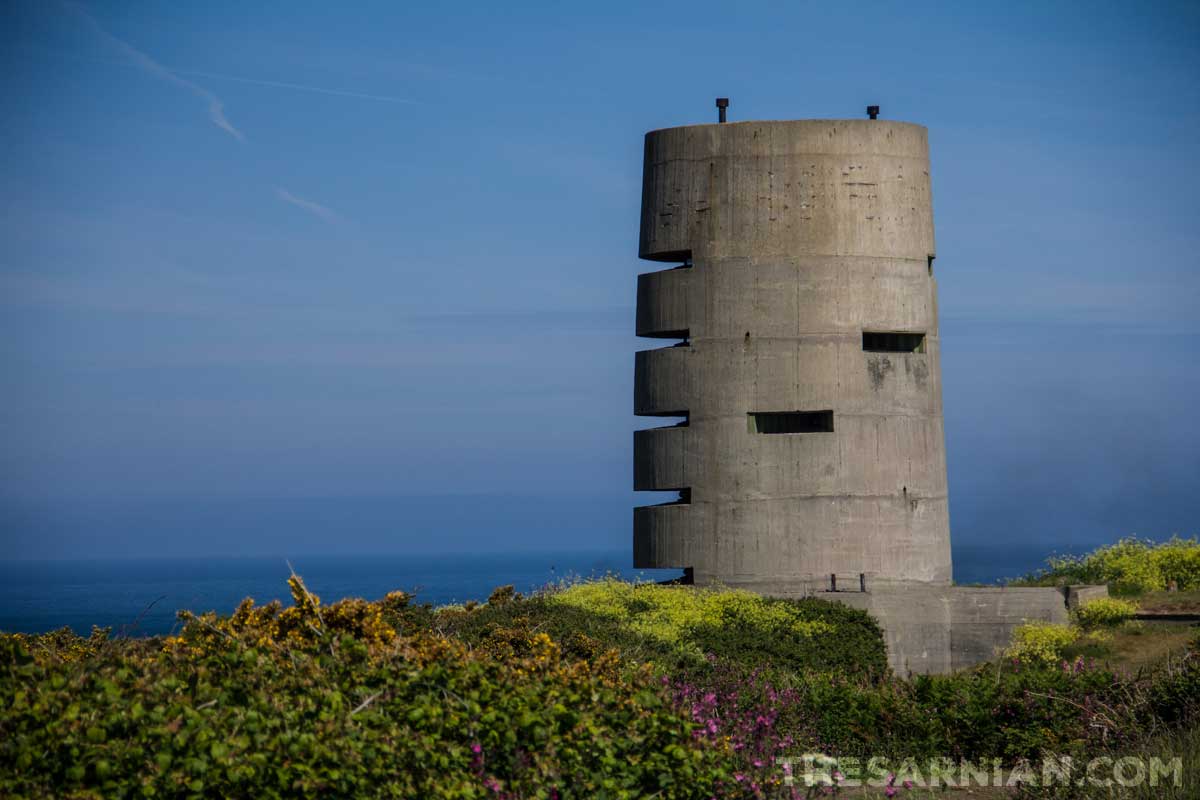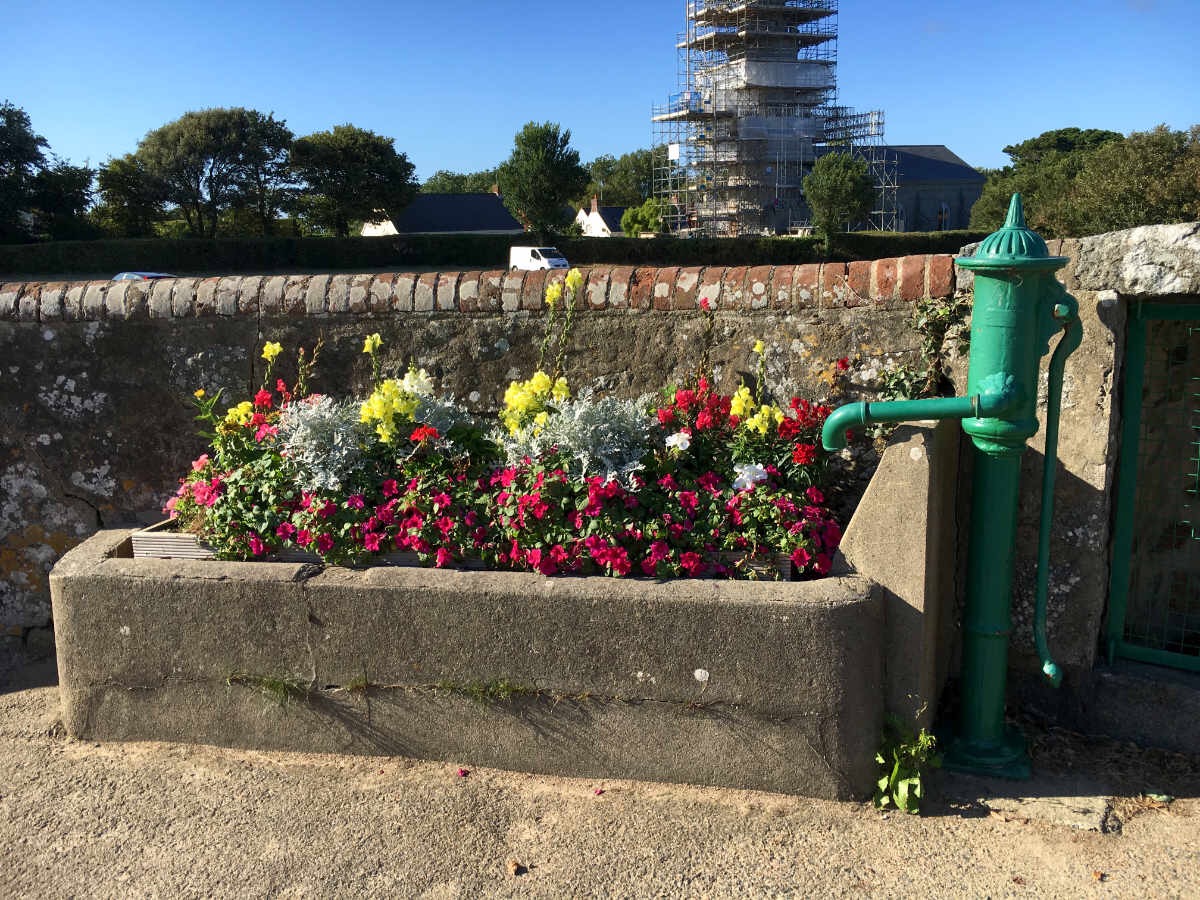Crevichon
Sitting just 215 metres from the coast of Jethou, between Jethou and Herm, Crevichon is an uninhabited islet of less than three hectares. Its name is Norman and said to refer to the ‘isle of crabs, crayfish or cranes’.
It has been used over the years as a source of granite for various notable building, including St Paul’s Cathedral in London, whose steps are constructed of Crevichon granite.
The BBC Domesday project described Crevichon thus:
Crevichon is a small islet connected to Jethou at low tide. They are both close to the south coast of Herm, but are privately owned and not at present open to the public.
Crevichon granite was used to build St Peter Port harbour and old pictures show the islet much larger than it is now. It is mainly grass covered with a white beacon on top of its conical hill. It is inhabited by many gulls and rabbits.
Brecqhou
Becqhou is a small island off the coast of Sark, which itself lies between Guernsey and Jersey.
The current residents — the twin brothers David and Frederick Barclay whose property includes the Telegraph newspaper and Ritz hotel — claim that they own it outright, having bought it in 1993. The neighbouring island of Sark considers it a tenement, and the UK’s Ministry of Justice, which oversees the Channel Islands, says it is a part of Sark.
Indeed, on this last point the British government is quite unequivocal, having spelled out in its December 2012 International Covenant on Civil and Political Rights:
The Bailiwick of Guernsey is the smaller of the two Channel Island Bailiwicks. It comprises the Island of Guernsey with the adjacent islets of Herm and Jethou, for whose administration Guernsey is responsible, and the separate jurisdictions of Alderney and Sark. The island of Brecqhou is part of Sark.
From 1929, Brecqhou was considered to be a part of La Moniere de Haut, one of the 40 parcels of land into which Sark was divided by the original 40 families that colonised the island. In that year, the Seigneur of Sark, Sybil Hathaway, sold Brecqhou to Angelo Clarke, and included with it a seat in the Chief Pleas, Sark’s governing body.
However, the Barclay brothers have since claimed that Brecqhou was never a part of Sark in the first place. Nonetheless, they have invested heavily in Sark over the years, now owning several hotels and much land on the island, and have involved themselves in its politics. Following its first democratic election in 2008, which was largely won by candidates opposed to the brothers’ financial activities on Sark, the brothers scaled back much of their activities and laid off close to 100 staff — around a sixth of the island population.
Jethou

Jethou is one of the smallest Channel Islands — smaller, even, than Herm, to which it was said to have been attached until a particularly stormy night in 709 saw the land between the two swept away to create two distinct islands. It is the smallest if the islands to be permanently inhabited. It is clearly visible from Guernsey’s east coast.
Like its close neighbour, it has been leased to a series of tenants over the years, some of whom have leased the two simultaneously. Notably this was the case with Scottish novelist Compton Mackenzie.

The island is surrounded by smaller islets, including Fauconniere (‘the falconry’) to the south and Crevichon to the north. Crevichon is the larger of the two, with a ruin on it, and was the site of carnage during the Second World War when a German Heinkle III bomber crashed there. There is some uncertainty as to whether the crash was caused by an engine fire or the plane was shot down by German artillery stationed on Brehon Tower, after mistaking it for an Allied craft.
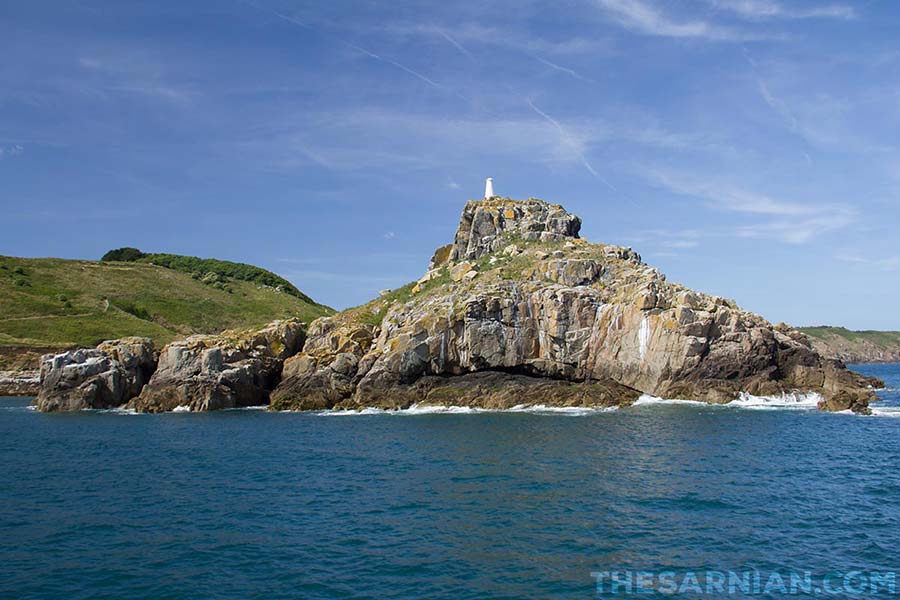
The crash caused some damage to the main house on Jethou, and a neighbouring cottage was completely destroyed. Debris was still being found on the beaches in the 1960s.
Jethou is conical in shape, with a steep hill to the summit, where a gallows site was used to hang pirates. There’s a small collection of buildings on the north east shore, facing Herm, including a manor house, store house, prison, cafe and gift shop. There is also a small pub — now private — called the Admiral Restald, one of the island’s earliest tenants.
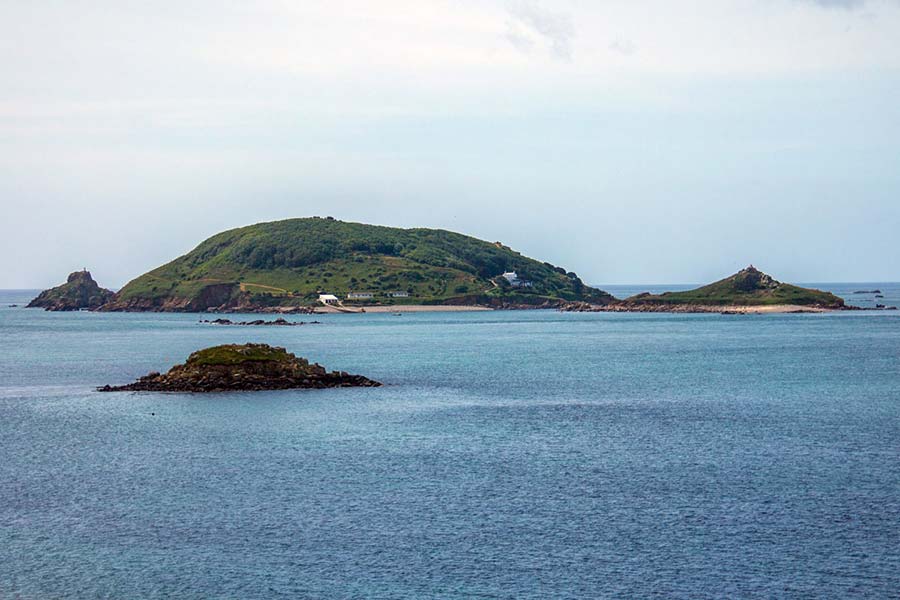
Jethou is said to have been a centre of smuggling and piracy over the centuries, much of it focused on the Great Creux, a cave that is only accessible at very low tide. There was a gibbet on the top of the island on which pirates used to be executed. Further gallows were later erected close to the harbour. The trade was seemingly successful, as many years later, when removing wallpaper from the manor house on the island, one later tenant discovered that they had been simultaneously stripping banknotes, which had been pasted to the wall beneath the paper so as to hide them. By the time they realised what they were doing, only four notes remained.
Sir Crompton Mackenzie, tenant of Jethou between 1920 and 1934, wrote that Guernsey used to burn its witches on Jethou at the time of the witch trials.
Jethou’s name
There is some speculation that the name Jethou is derived of the Viking name Keitholm, which itself comes from Keithou, or island place or roaring. The BBC speculates in its history of Jethou that this could have been due to ‘the noise of air being forced through the passage into the Creux du Diable’.
A guidebook to the island written during the time of its 22nd tenant, Susan Faed, described the Creux du Diable thus:
…if you continue on the lower path, a further 80 yards [from the turn to Fairy Wood] will bring you to the Creux du Diable (Devil’s Hole), a natural formation in the shape of a funnel-like hole about 100 feet in depth, breached by the sea at the bottom through an archway of rock. At high water spring-tide, the sea enters the bottom of the hole and frequently, during the winter, leaves driftwood on the little beach within.
Flora and fauna
Jethou is home to many puffins, which can be viewed from a point on the eastern shore, between Puffin Bay and Neptune’s Chair. They are protected by law and nest in holes in the cliff.
Apart from the birds, there is very little wildlife on the island, although it does have a healthy population of rabbits, perhaps as a result of them being introduced to the island for the purpose of breeding.

There are many trees on the island, with a small wooded area climbing the slope, and fruit trees closer to the lower path that surrounds the island. There is considerable scented heather and, in the lower areas, gorse grows close to the beaches. Bluebells and primroses grow in the middle of Fairy Wood. Campion grows on the western half of the island.
Below the summit of the island, there are terraces on the south side, where they face the sun. These are said to be 1000 years old and were once used to grow vines.
Religion on Jethou
Religion has played a large part in the history of the island, as it was owned by the Monastery of Mont St Michel for close to 350 years, and leased to tenants during that time.
However, as on Herm, there is evidence of even earlier religious activities, with neolithic remains in evidence. This is unsurprising considering the two islands were once a single landmass.
A guidebook produced by the Faeds during their tenancy on the island states that ‘the standing stone at the entrance [to Fairy] Wood has a hole that was said to line up with another long lost stone on Herm in the time of the druids.
A 4000-year old standing stone on the summit of the island has been inscribed with a cross, while archaeologist Dr Jenny Cataroche, author of The History and Archaeology of Jethou has judged rocks on the eastern face of the island to have once been part of a medieval church.

Governance of Jethou
Jethou is governed by Guernsey’s States of Deliberation where it is represented in the chamber by the deputy for the St Peter Port South district.
Like Herm, it’s been looked after by a series of tenants, but without the stipulation that it should be maintained for the enjoyment of all comers it’s not always been possible for the public to gain access to the island. It is currently closed to the general public.
Tenants of Jethou
- 1000s
Admiral Restald1028
The Admiral was given the islands by the Duke of Normandy. When he retired he passed it on to the Monastery of Mont St Michel but continued to live in a house there.
- 1100s
Guillaume Chesney1158
Guillaume (French for William) was awarded tenancy of the island in 1158, which he maintained until he died and it passed back to the monastery.
- 1200s
Sir William de Chesney1270
Granted the right to keep rabbits on the island, which the BBC claims is the reason for the island having such a large rabbit population to the present day. The island once again passed back to religious orders on his death, this time to the Abbot of the Vale Priory, while remaining under the control of the Monastery of Mont St Michel. This remained the case until Henry V shut down the French monasteries in his dispute with France, although it is suggested that monks continued to live on the island nonetheless for the next century.
- 1700s
Charles Nowall1717 – 1737
Following a long period during which the island was officially uninhabited, the lease was taken up by Charles Nowall, who rented both it and Herm at the same time. Charles Mackenzie later rented the two islands together, despite the fact that regulations state that should not be allowed. There is a mulberry tree still growing in Jethou, which the guide produced by Susan Faed asserts was planted during Nowall’s tenancy.
-
Charles Mauger1737 – 1758
Mauger held the tenancy of the island until his death, when it passed to his sons in law and their wives.
-
Thomas Guille and Thomas Le Marchant1758 – 1779
-
Henry de Jersey and Henry de Jersey II1779 – 1800
Father and son, who were tenants one after the other, with the latter Henry de Jersey taking over upon his father’s death.
- 1800s
Philip de Quesnel1800 – 1921
-
Edward Falla, Peter Le Cocq, Nicholas Le Feurve, Peter de Lisle1822
-
Jean Allaire1823 – 1846
Former privateer and freelance ‘pirate’. Privateers were armed seamen who were licensed by the Crown to seize enemy ships. They were funded by investors who shared the profits of the cargo seized from the vessels, and the value of the vessels themselves. Privateering came to an end around Guernsey prior to Allaire’s residency on Jethou, when hostilities with France came to an end in 1815.
Allaire loaned money to the seigneurs of Sark, the Le Pelley family, when silver had been found on Sark. The family was unable to repay the loan when it became due in 1852, and so Allaire’s daughter became the seigneur of Sark herself.
Allaire’s home in St Peter Port, Mount Durant, is now the official home of the monarch’s representative on the island, the Lieutenant Governor of Guernsey. -
Marie Allaire Collings1823 – 1846
-
States of Guernsey1852
The States of Guernsey took over the island and quarried it for granite for four years. This considerably changed its overall shape, and apparently so altered the wind flow around the rock that it lost some of the characteristic sounds caused by the passage of air through the Creux du Diable.
-
George Charles Gee1856 – 1863
Although the States of Guernsey re-let the island, the Queen retained the rights to quarry it, and the Lieutenant Governor of Guernsey was allowed to shoot rabbits there.
-
Perry, Lindell and Giffard1863
-
Lr Colonel Montague Fielden1867 – 1877
Fielden was probably the first notable tenant of Jethou (and simultaneously Herm) to leave much of a mark on the island. He suggested that a floating causeway be built connecting Jethou and Herm to replace the strip of land that once connected them and was washed away by a storm in 709. It was never built (and still hasn’t been) despite the States of Guernsey giving permission at the time. This is probably a good thing as it might not have been able to withstand the fierce tidal flows. He was later discovered to be smuggling brandy and stowing it in the island storehouse, which explained why he would have his servants shoot at passing vessels to scare them away. His tenancy was revoked as a result.
-
Caretakers1877 – 1880
-
WHB Moullin1880 – 1885
-
Caretakers1885 – 1890
- 1900s
Sir Austin Lee1890 – 1918
Austin Lee was a diplomat and governor. He took over the lease on the island following a period during which it was put in the hands of a series of caretakers and, when he departed at the end of the First World War, it was again handed over to caretakers for two years until Scottish novelist Sir Compton Mackenzie arrived. Towards the end of his tenancy he sublet the island to FJ Guy while Lee himself was away fighting in the Boer War. Guy didn’t want to give up his sub-tenancy on Lee’s return and the two found themselves in court. Lee won, but never returned to the island himself as by then he was stationed at the British Embassy in Paris.
-
John Drillot1919 – 1920
Drillot was merely a caretaker, rather than tenant on the island.
-
Sir Compton MacKenzie1920 – 1934
The novelist leased both Herm and Jethou at the same time and write several novels there. He and his wife Faith brought a car to the island, and his writing hut is still present there, and was described in a report in the Guernsey Press, following a visit to Jethou by a group of schoolchildren from neighbouring Herm:
We met up again with [Jethou’s housekeeper] Annie at Sir Compton McKenzie’s writing hut, the tiny wooden structure with its pretty, flowered patio. Designed to cut out all distractions from his work, the hut contains only a desk, two chairs, a teapot and two cups. The patio, however, offers a gorgeous, uninterrupted view of Guernsey.
Mackenzie gave up the lease of Herm in 1923 due to the prohibitive cost of maintaining both islands, but held on to Jethou until 1934, during which time he installed a sewerage system and extended the main house.
-
Harold Fortington1934 – 1948
When Mackenzie left the island he sold the remaining part of his lease to Fortington, an American, for the sum of £2020, but Fortington didn’t remain resident on the island for long. He and his wife left four years later, having build a reservoir in the interim, but retained the lease and allowed George MacDonald to stay behind. They remained on the island almost until the end of the Second World War, but were forced to move to Herm in 1944. Harold Fortington died that same year, and his wife sold the lease four years later.
-
Lt Colonel William Gill Withycombe1948 – 1955
Withycombe was the first tenant to open the island to the general public, running a small restaurant and bar by the shore. However, he seemingly paid little attention to the terms of his license, and was raided by Guernsey Police in 1954 for serving alcohol outside of hours.
-
Peter Steer Watkins1955 – 1956
-
Herman Stockey1956 – 1958
Withycombe was the first tenant to open the island to the general public, running a small restaurant and bar by the shore. However, he seemingly paid little attention to the terms of his license, and was raided by Guernsey Police in 1954 for serving alcohol outside of hours.
-
Group Captain William Hedley Cliff DSO and Margaret Cliff1958 – 1964
The Cliffs were the first tenants to produce a set of Jethou stamps, with five examples printed in 1960, each showing scenes of the island, and valued at 1.5 pence, 4 pence, 6 pence, 9 pence and 18 pence. The island continued issuing stamps until 1969.
-
Susan Faed1964 – 1971
Susan Faed, her husband, Angus, and four children, Colin, Erik, Colette and Amanda, did much to improve the island, building a stone jetty and cultivating much of the land to grow potatoes, broccoli and daffodils. Upon leaving in December 1971, they returned to Jersey. The Faeds produced an excellent guide to the history of Jethou for visitors to the island.
-
Sir Charles Hayward1972 – 1983
Hayward was an entrepreneur with factories in the UK, Netherlands, West Germany, South Africa and Australia, and head of a foundation — the Hayward Foundation — that donated money to good causes and built a home for the elderly in Wolverhampton, where Hayward was born. He acquired the lease to Jethou with his wife, Hilda (nee Arnold) and the couple lived there until Charles died.
-
Anthony Duckworth1984 – 1991
-
Dr Peter and Catherine Ogden1991 – present
Peter Ogden founded Computacenter, an IT services company, after years spent working in investment banking. He took over the lease on the island in 1991, and in 1995 became a sub-tenant of the States of Guernsey.
Abreuvoir

Abreuvoirs are traditional drinking troughs for cattle that are built on a spring at the side of a road. They are constructed using traditional local stone and often bear the name of the parish in which they reside.
They are no longer so important to the island’s farmers as they can rely on mains water rather than natural springs, but they are maintained nonetheless. The character of Tony Guille included abreuvoir maintenance within his list of jobs as an employee of the States Works.

Guille, Tony
Tony Guille appears just once in book 1, Dead in the Water, when he arrives on the headland at Icart Point to sand down and re-paint a bench.
He is employed by States Works and therefore can be posted anywhere on the island to repair and maintain municipal assets. This can include reseating the stones of an abreuvoir or cutting back the hottentot fig, which he previously considered to be the bane of his life.
Fort Grey
Known locally as the Cup and Saucer on account of its shape, Fort Grey is a Martello tower that has since been converted for use as a shipwreck museum. It is more accurately known as the Castle of Rocquaine (it sits by Rocquaine Bay) but was named after Earl Charles Grey, father of the Prime Minister of the same name, who was governor of Guernsey at the turn of the 19th century. (He’s also not the Earl Grey after whom the tea is named — again, that was his son.)
Ollie Carey can see Fort Grey from his boat, the Huffin’ Puffin, from its mooring in Portelet Harbour. Miles Bichard likewise tries tempt Christine Le Page back to his house for a drink after work with a promise of a view of the fort from his lounge, so he and Ollie would appear to live very close to one another.

A fort of some kind has been present on this rock since at least 1680 as there are records in the Royal Court library detailing the structure.
The States of Guernsey bought the present Fort Grey from the War Office in 1891 for the sum of £185. Less than 50 years later it had been taken over and put to use by the occupying German forces during the Second World War.
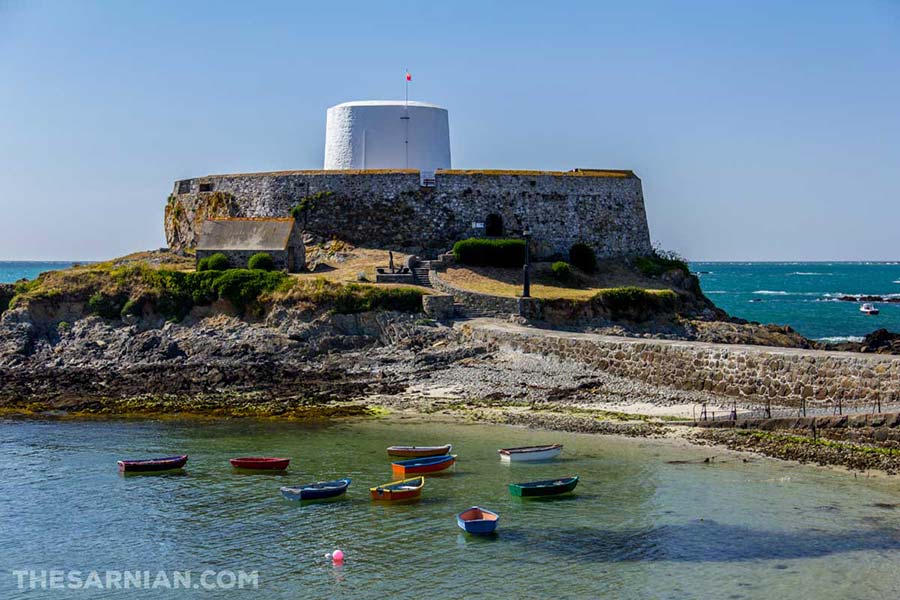
Sark

One of the smaller islands within the Bailiwick of Guernsey, Sark totals two square miles and has a population of around 600. Although everyone speaks English, it has its own language, Sercquiais, which is descended from Norman.
Sark is nine miles from Guernsey and almost — but not quite — attached to the neighbouring island of Brecqhou.
Remus Carey knows Sark well as it is surrounded by fertile fishing grounds that are also good for lobster, and the fact that his boat, the Huffin’ Puffin was found close to the island after Remus disappeared is the only clue that his son, Ollie, has to go on when he is trying to find out what happened to him.
The island is split into two parts. The smaller part is consistently called Little Sark, but various maps call the larger part Big Sark, Greater Sark or Great Sark. The official States map produced by the government of Guernsey, simply labels the larger part as Sark. The two parts are joined by La Coupee (see below), a narrow path around 350ft high, with steep sides that lead down to one of the best beaches on the island.
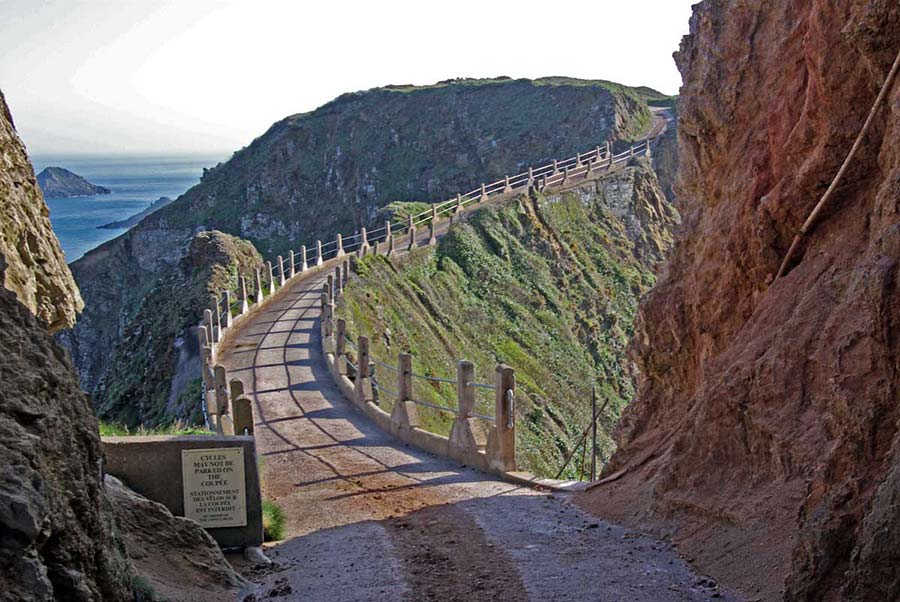
There are no cars on the island, so transport is mainly bike, foot or horse, although some residents run tractors. There is optional tractor transport up from the harbour, and the island ambulance is towed by a tractor. This proved an issue for Charlie Dubois when sent to the island in book 1, Dead in the Water, and in need of a quick route back:
He was running along Sark’s only real street. On an island without any cars, it was that or a bike or a horse, and he didn’t have time to scout round for either. Neither was he sure when the next scheduled boat would be leaving. If it came to it, he’d assured Renouf, he’d bribe a trawler to offload some pots and find him some space on its deck.
In his book, The Silent War, Frank Falla describes how the matter of vehicles on Sarks roads was a sensitive matter even during the German occupation. He writes,
…the censor’s blue pencil descended thick and heavy on a story I wrote in The Star about Sark. When I first heard the facts I phones Goettmann, told him what I knew and asked if I could go ahead. Back came the answer, ‘Certainly’. The paper’s final page proof carried the story but when it was finally submitted to Goettmann and ready for printing, the sark article — lock, stock and barrel — was deleted.
The whole undertone of the article may have caused the trouble; or the headlines, ‘Motor Cycles, Cars and a Lorry on Sark Roadways — Peace of Small Island Shattered’ may have been too forthright. We printed about a hundred copies of the paper before receiving the deletion, so some people may still have copies of the banned article, with emphasis on the fact that Sark’s ban on all cars had been rudely broken.
The ban on cars is maintained to this day and not even visits from the Queen, Prince Philip or the Home Secretary would move Sark people to think of lifting the ban. When the high and mighty go to Sark they travel like other people (and they themselves would not have it otherwise) by horse-drawn carriage.
Law and governance
Despite the small population, Sark has its own Parliament and laws based on Normal law. The Parliament consists of 28 elected members, one life member and one hereditary member. Previously it comprised 40 tenant members, whose right to be there came down from the original 40 tenant families who were required by the Crown, owner of the island, to live on it and defend it.
The island was Europe’s last fiefdom until as late as 2008, overseen by the Seigneur (or Dame if the position was held by a woman) who would inherit it from their ancestors. The Seigneur (or Dame) appoints a Seneschal as the head of the Parliament and island judge.
Seigneurs and Dames of Sark
-
1500s
Hellier de Carteret1563 – 1578Came up with the idea of cultivating Sark — at the time a baren island — and granted the fiefdom by Queen Elizabeth I.
-
Philippe de Carteret I1578 – 1594
Married to Rachel Poulet, who was the daughter of the Bailiff of Jersey and daughter of the Governor of Jersey.
-
1600s
Philippe de Carteret II1594 – 1643Also Bailiff of Jersey. Knighted in 1617. Apparently highly fertile, he had 10 children — seven sons and three daughters.
-
Philippe de Carteret III1643 – 1663
Fought on the side of the king in the English Civil War and was subsequently knightered on At Aubin’s Bay beach in Jersey by Charles, Prince of Wales, while the latter was in exile.
-
Philippe de Carteret IV1663 – 1693
-
1700s
Charles de Carteret1693 – 1715 -
John Carteret1715 – 1720
Lord President of the Council in Britain from 1751 until 1763 during the Prime Ministership of Spencer Compton (effectively meaning he was running the country). He was the British ambassador to Sweden and also inherited an eighth of the Province of Carolina.
-
John Johnson1720 – 1723
Became Seigneur when he purchased the fiefdom from John Carteret.
-
James Milner1723 – 1730
Bought the fiefdom from John Johnson for £5000. Although his won would have taken it over on his death, the son was the Bishop of Gloucester, and he in turn sold it on without ever assuming the role.
-
Susanne le Pelley1730 – 1733
-
Nicolas le Pelley1733 – 1742
-
Daniel le Pelley1742 – 1752
-
Pierre le Pelley I1752 – 1778
-
1800s
Pierre le Pelley II1778 – 1820 -
Pierre le Pelley III1820 – 1839
-
Ernest le Pelley1839 – 1849
Mortgaged the fiefdom for £4000 to finance the continued operation of the island’s silver mine. However, the mine collapsed and was subsequently closed, so the seigneurie, the Seigneur’s feudal home, was sold for £6000 to meet the mortgage payments.
-
Pierre Carey le Pelley1849 – 1852
-
Marie Collings1852 – 1853
Collings is said to have never visited Sark during her term of office since she was too old to govern it effectively. She remained at home in Guernsey the whole time and was represented by her son on Sark, William Thomas Collings, who would become the next Seigneur.
-
William Thomas Collings1853 – 1882
A priest from Guernsey, Collings did much to develop the island, opening some small hotels to encourage tourism and funding churches and graveyards. He only spent his summers on Sark, returning to Guernsey for the winter. He funded a militia on the island.
-
1900s
William Frederick Collings1882 – 1927Allowed his father’s militia to disappear, was a keen sportsman and said to have been a violent alcoholic and an opponent of the authority of the clergy.
-
Sybil Hathaway1927 – 1974
The daughter of William Collings, Sybil was raised as thought she was a boy and despite her physical disability (one leg shorter than the other) was taught to shoot and climb cliffs. She moved to London and married Dudley Beaumont, grandfather of Michael Beaumont (see below), against her father’s wishes and she didn’t move back to Sark until after her mother’s death in 1912. Beaumont died of flu in 1918.
She inherited the fiefdom when her father died in 1927, introduced the ban on motor vehicles as a means of encouraging tourists, and met Robert Hathaway while on holiday in America in 1929. They married 12 days later and he technically became co-ruler of the island, although in practice it was Sybil who maintained control.
The German Occupation of the Channel Islands from 1940 until 1945 encompassed Sark. Hathaway spoke German and maintained cordial relations with the occupying forces despite making them bow before her before she allowed them to sit in her presence.
She died of a heart attack, at home, in 1974, aged 90.
-
Michael Beaumont1974 – present
As grandson of Sybil Hathaway, Michael Beaumont inherited the fiefdom on her death as his father had been killed during a Blitz raid in the Second World War.
French invasion
Each transition from one Seigneur or Dame to the next appears to have been undertaken without much fuss, but that might not have been the case if French nuclear physicist Andre Gardes had his way. He considered himself to be the rightful heir to the position and so he staged an unsuccessful ‘invasion’ in 1990. His downfall was most likely due to the fact that he had posted notices announcing his intention to invade the day before making his attempt, which was scheduled to take place at noon.
The Seigneur himself was off the island at the time, having travelled to Guernsey to collect a cheque but the local volunteer constable found the would-be invader sitting on a bench, loading his weapon. When the constable asked for a closer look, Gardes handed it over, at which point the constable arrested him.
Image and video credits
- Sark from above: Phillip Capper, released under Creative Commons Attribution 2.0 Generic — source, Wikipedia.
- La Coupee: Clemensfranz, released under Creative Commons Attribution-Share Alike 3.0 Unported — source, Wikipedia.
- Video: Sark, A World Apart from Sue Daly on Vimeo.
L’Ancresse
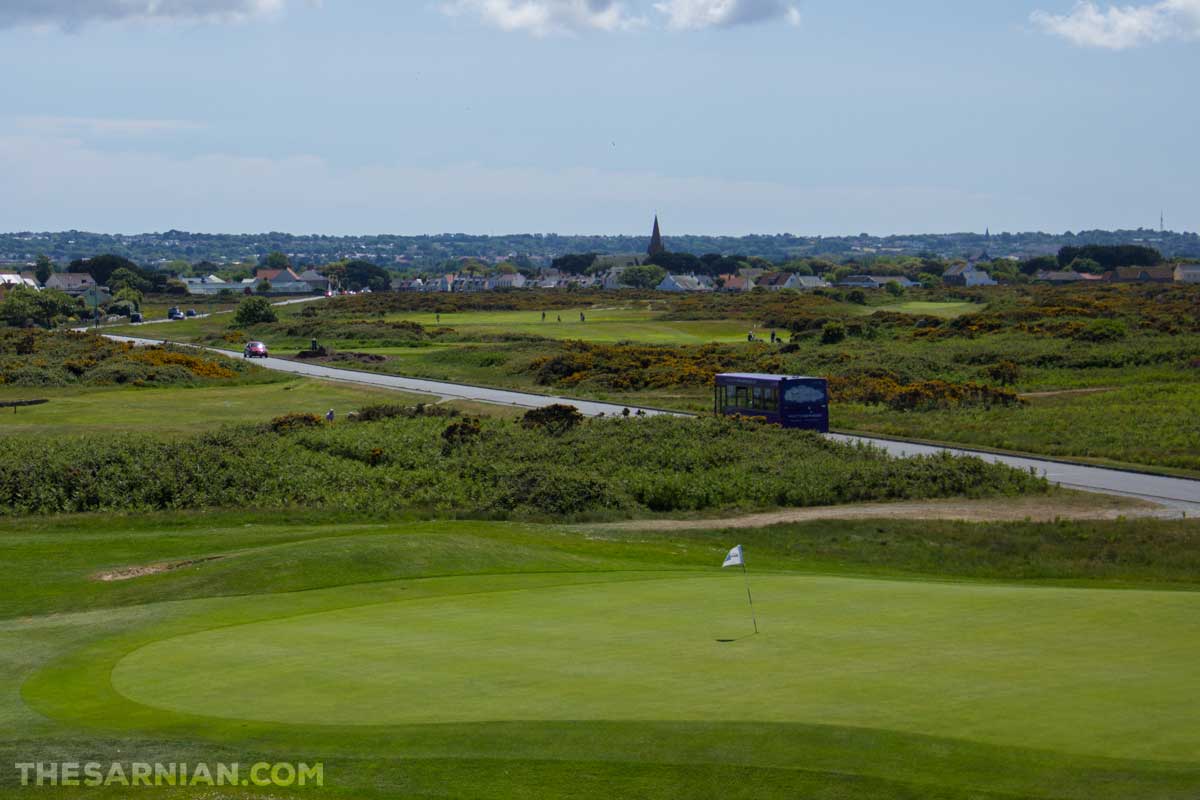
L’Ancresse is a wide bay and large common at the very north of the island. The bay is split into L’Ancresse and Pembroke beaches, which merge into one another and provide one of the longest unbroken stretches of sand to be found on the island.

The beach is clean and the sea is very shallow. At the eastern end of the bay there’s a shooting range that flies red flags to warn when the shooting is taking place.


In book 1, Dead in the Water, Remus Carey takes his wife Odette to the beach when he wants to spy on Marc Renouf, who is there with his wife, Sophie, and their daughter. Remus and Odette lay on the concrete slab at the western end of the bay.
The good sight lines across the bay and out to sea mean that it has long been of interest to those planning the island’s defence, and so it is well served by distinctive granite Napoleonic towers, which sit on the common at the back of the bay.

The common has several neolithic remains, including burial chambers, and is also the site of one of the island’s golf courses.

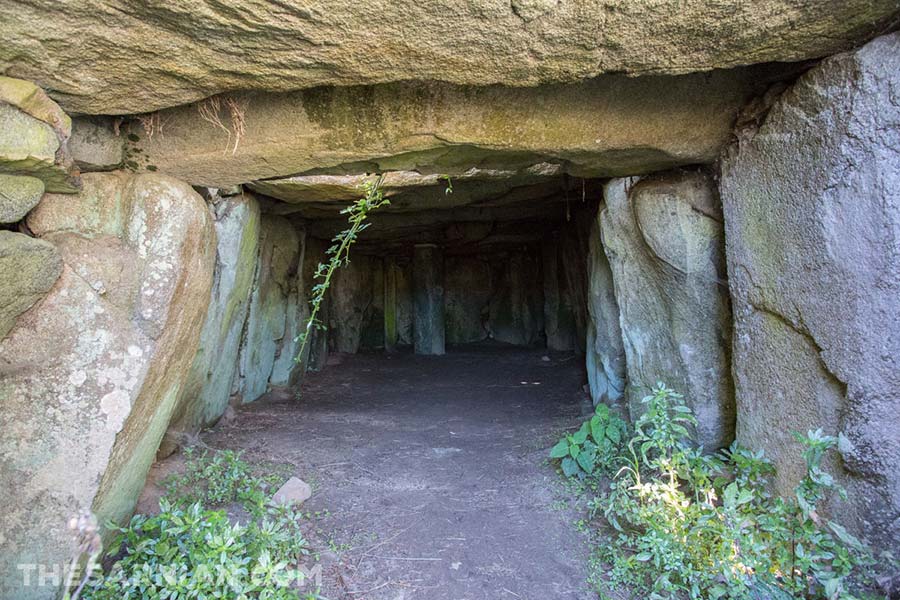
As one of the largest green spaces on the island, it’s no surprise that Renouf chose the edge of the common as the location on which he would build the dream home to which he would retire one day.

Huffin’ Puffin

When Remus Carey inherited the Huffin’ Puffin from his father it was a regular fishing boat. This served his purpose perfectly as it gave him a plausible cover. At the same time, though, he sat about improving it with a more powerful set of engines.
After Remus disappeared, his son, Ollie, took it over and he now lives in it at the mooring in Portelet Harbour. He lives on it with Remus’s cat, Sampson.
Outwardly, the Huffin’ Puffin doesn’t look much different to any other boat of its kind and it attracts some disparaging remarks from Marc Renouf who considers it to be ‘a bucket and tub’. However, as Remus explains in book 1, Dead in the Water, the Huffin’ Puffin is,
Better than the line of her bow might suggest. The engines develop a good twenty percent more power than her weight requires, the torque is eighty percent efficient. She has two propellers to reduce heeling, although her stern profile would have you believe she still had only the single motor installed by the boatyard.
Pleinmont
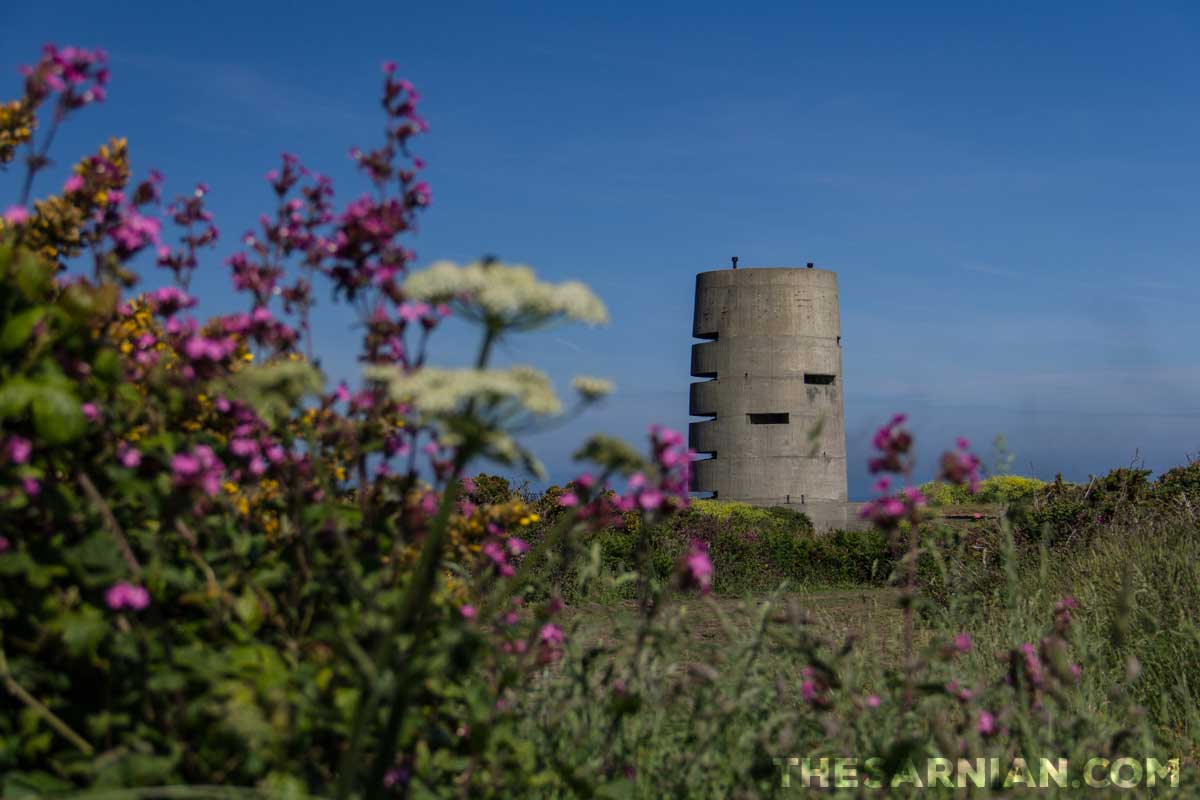
Pleinmont headland sits in Torteval parish and is one of the highest points on the island. The view looks out across to Les Hanois lighthouse, and paths lead down Fort Pezeries and, from there, around to Portelet where Ollie and, previously, Remus, berthed the Huffin’ Puffin.
The height and unobstructed views from the headland made it an obvious position for a defensive tower during the Second World War (see above), which is now open to the public on a weekly basis. In book 1, Dead in the Water, it is the start point for a cliff walk that Simon Langlois is sent to report on.
There are plenty of places to sit and look out to sea on the headland and it is one of the best places from which to watch the sunset each evening (see below).

Being positioned so close to Portelet, the headland marks a significant nautical feature for Remus Carey. He takes Marc Renouf around it when the two of them motor out to Havelet Bay, close to the outdoor bathing pools in St Peter Port. It is also the point from which a member of the Consortium watches Remus passing on his way to the rendezvous in Sark.
